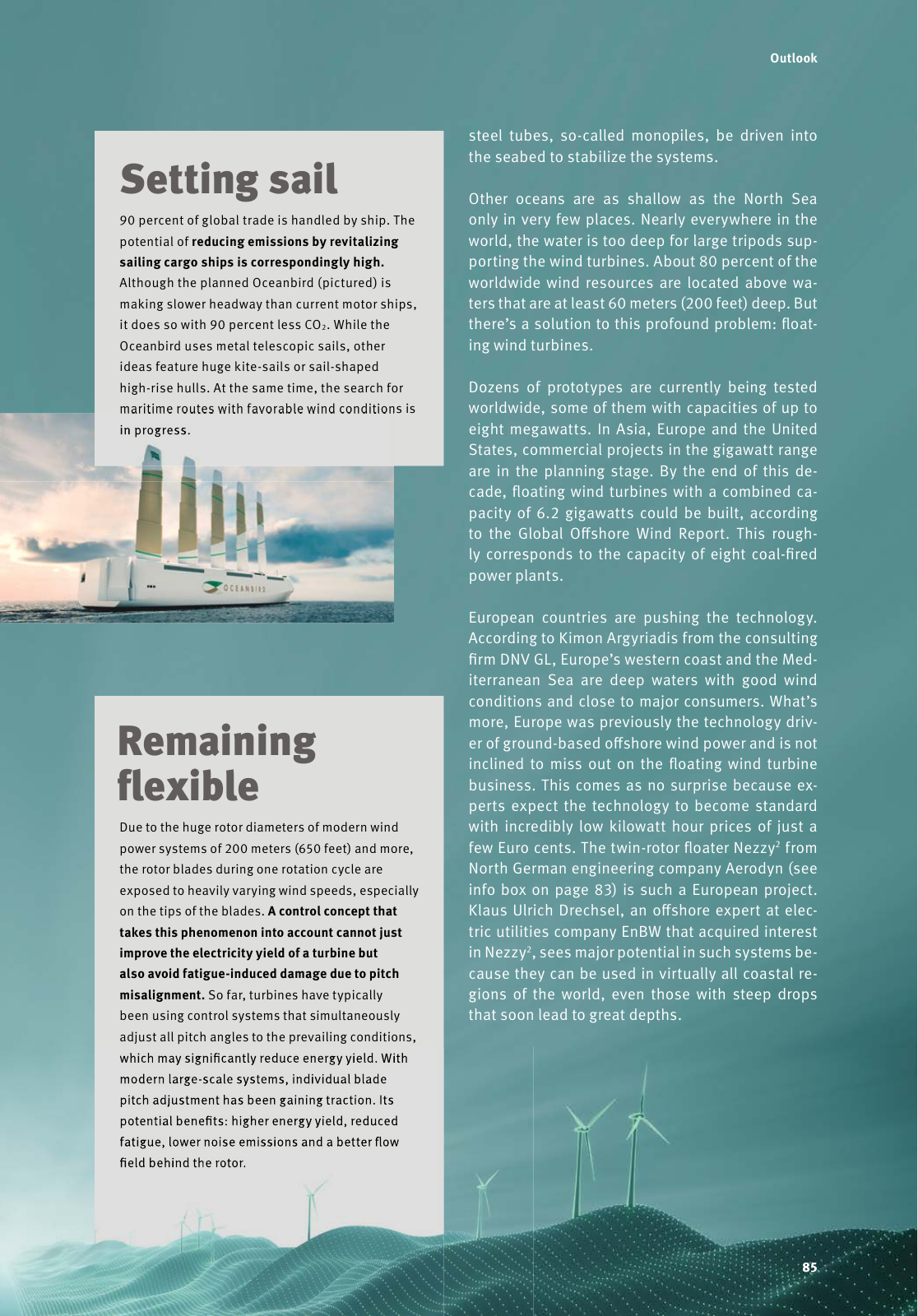Due to the huge rotor diameters of modern wind power systems of 200 meters 650 feet and more the rotor blades during one rotation cycle are exposed to heavily varying wind speeds especially on the tips of the blades A control concept that takes this phenomenon into account cannot just improve the electricity yield of a turbine but also avoid fatigue induced damage due to pitch misalignment So far turbines have typically been using control systems that simultaneously adjust all pitch angles to the prevailing conditions which may signifi cantly reduce energy yield With modern large scale systems individual blade pitch adjustment has been gaining traction Its potential benefi ts higher energy yield reduced fatigue lower noise emissions and a better fl ow fi eld behind the rotor Remaining fl exible steel tubes so called monopiles be driven into the seabed to stabilize the systems Other oceans are as shallow as the North Sea only in very few places Nearly everywhere in the world the water is too deep for large tripods sup porting the wind turbines About 80 percent of the worldwide wind resources are located above wa ters that are at least 60 meters 200 feet deep But there s a solution to this profound problem fl oat ing wind turbines Dozens of prototypes are currently being tested worldwide some of them with capacities of up to eight megawatts In Asia Europe and the United States commercial projects in the gigawatt range are in the planning stage By the end of this de cade fl oating wind turbines with a combined ca pacity of 6 2 gigawatts could be built according to the Global Off shore Wind Report This rough ly corresponds to the capacity of eight coal fi red power plants European countries are pushing the technology According to Kimon Argyriadis from the consulting fi rm DNV GL Europe s western coast and the Med iterranean Sea are deep waters with good wind conditions and close to major consumers What s more Europe was previously the technology driv er of ground based off shore wind power and is not inclined to miss out on the fl oating wind turbine business This comes as no surprise because ex perts expect the technology to become standard with incredibly low kilowatt hour prices of just a few Euro cents The twin rotor fl oater Nezzy2 from North German engineering company Aerodyn see info box on page 83 is such a European project Klaus Ulrich Drechsel an off shore expert at elec tric utilities company EnBW that acquired interest in Nezzy2 sees major potential in such systems be cause they can be used in virtually all coastal re gions of the world even those with steep drops that soon lead to great depths 90 percent of global trade is handled by ship The potential of reducing emissions by revitalizing sailing cargo ships is correspondingly high Although the planned Oceanbird pictured is making slower headway than current motor ships it does so with 90 percent less CO2 While the Oceanbird uses metal telescopic sails other ideas feature huge kite sails or sail shaped high rise hulls At the same time the search for maritime routes with favorable wind conditions is in progress Setting sail 85 Outlook

Hinweis: Dies ist eine maschinenlesbare No-Flash Ansicht.
Klicken Sie hier um zur Online-Version zu gelangen.
Klicken Sie hier um zur Online-Version zu gelangen.